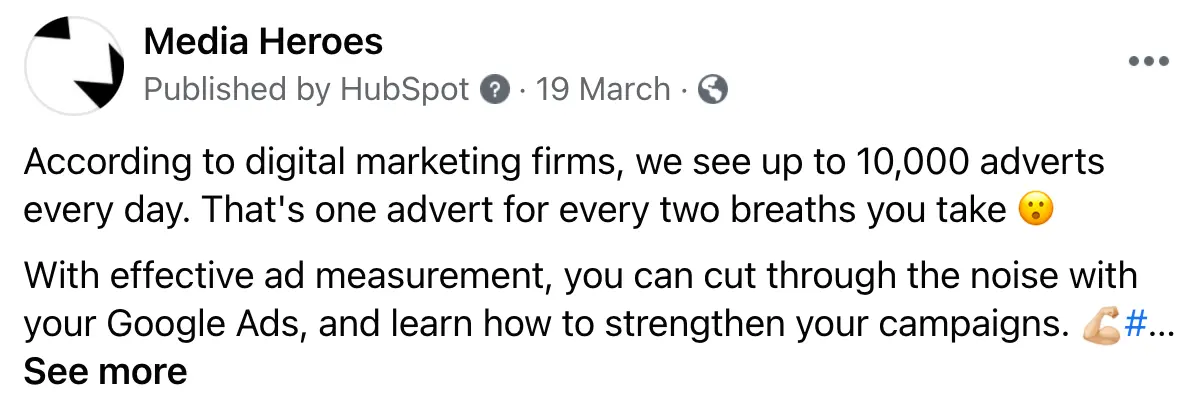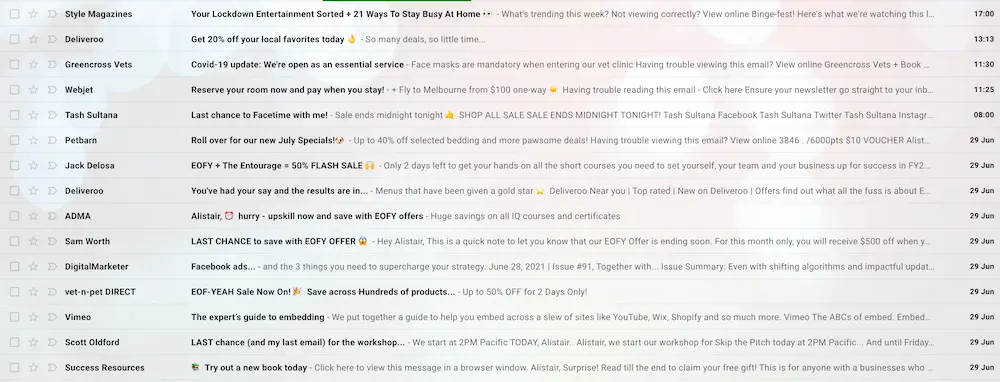Growth Booster: Strengthen Your Brand With Emoji Marketing
Having a strong brand personality is essential for creating connections with your customers. It gives your business its very own soul, transforming it from an emotionless logo pasted on a website to a person of its own, with its own values, opinions, and idiosyncrasies. This humanises it and makes it much more relatable, which people can like, appreciate, and be more inclined to purchase its products.
Emojis are an excellent way to express your brand’s personality. It’s amazing that such a depth of emotion can be packed into so small a graphic, and even the most “serious” of businesses should be utilising their efficiency to breathe life into their brands. They’re also well-designed and bursting with colour, which makes your text a little more interesting.
In this article, we’ll explore how you can add personality to your brand using emojis, to foster a sense of connection and interest for your customers, and generate more sales for the business.
Time and cost
Emojis are super-quick to add and free to use everywhere.
Weighing up your choices and adding the emoji should take a minute max—more than that, and you’re probably overthinking it.
What you need
All you need is your social accounts, and if you’re sending regular EDMs to your customers, an email management tool such as HubSpot.
How to do emoji marketing
There are three main marketing channels for emoji marketing: social media, email, and search engines (SEO emoji marketing). They each have their own best practices.
#1 Emoji social media marketing
Social media is a playful space where emojis can shine. They can be used in regular posts or adverts, and have shown to get more likes, shares, and comments from users.2
Facebook, Twitter and Instagram are the most appropriate places to use emojis. They can work on LinkedIn, but as a professional platform, you’ll need to use your discretion to ensure they’re suitable.
These are some effective ways to use emojis on social media.
Clarify the intended emotion of your post with emojis
Words can be ambiguous at times, and a social post you believed to be positive can come across as disparaging, or even sarcastic. Emojis are a fantastic way to affirm the emotion of your message and really nail your point.
In this scenario, they’re often effective at the very end of the message. For example, the post below is conveying feelings of determination and strength, so the bicep flex emoji is a great way to highlight and reinforce them in the customer’s mind.
In this example for home clearance experts Property Clearance, the feeling of being unwell is being highlighted, and is then followed up by a positive solution for tackling it.
This post from the Australian Natural Therapists association highlights a ton of emotions, and groups them with their related words:
Add emotion to your post
Emojis can also be supplementary, adding extra emotion to your original message. This allows you to convey multiple feelings and sentiments with fewer words and characters, which is handy on a platform like Twitter.
In this example, an article on how to measure your email marketing is being promoted. By adding the “hands up” emoji, the post is imbued with a feeling of success and celebration—emotions that wouldn’t have been communicated without them.
In the example below, we’re adding a sense of surprise/shock to the number of adverts that people consume each day:
Reinforce your post’s message
Emojis of objects can make your message easier to comprehend. For example:
This post is promoting an article on lead gen magnets. The word “magnets” isn’t used in the text, but is communicated with an emoji instead, creating an association in the reader’s brain and making the message a little more concrete.
In the following example, we’re reinforcing the idea that you can make more money by accurately measuring your digital marketing:
This law firm has used emojis to reinforced and highlight a sense of celebration, after an award win:
Encourage engagement
Rather than being supplementary, emojis can become the focus of a social media post, and inspire your users to engage with it. A local cafe may post something like the following:
This invites their followers to consider their favourite fruit and respond with their choice, which helps to spawn conversation and other forms of engagement.
#2 Emoji email marketing
Email remains one of the best ways to get new leads, and emojis can improve your chances. Here are the most effective ways to use them.
Consider subject line emojis
When sending marketing emails, the biggest challenge is getting people to open them. Most of us are bombarded with emails of various types, and when we receive an email from someone trying to sell us a product or service, we delete it about 80% of the time.3 So your subject line needs to use enticing language, have a clear value proposition, and if appropriate, add a little personality with an emoji.
But be warned: the jury is still out on emojis in email subject lines. Sometimes they boost open rates, and other times they can harm them.5,6 It depends on the message being sent, and the seriousness of your branding, so consider every email before automatically tacking an emoji on the end. And always complete an A/B test for your subject line with a small subset of customers, to determine a winner for the larger mailout.
Consider emojis in your preview text
If you’re using an email marketing tool to send your emails, you can edit the email’s preview text (the text that comes after the subject line for the email, when unopened in the client’s inbox). As with the subject line, the preview text provides a good opportunity to increase open rates, but comes with the same caveats.
Use emojis sparingly in the email body
Email is a more professional communication tool, so emojis should be used sparingly. It’s fine to use them in the email’s body, provided it fits with your branding. Otherwise, you may risk coming across as unprofessional.
Don’t use them for serious emails
If you have something serious to say, like a big change that affects customers or a political message, avoid emojis at all costs. Weighty topics should be kept as professional as possible.
#3 SEO emoji marketing
Did you know that you can even add emojis to your page titles, and have them appear in Google’s search results? They’ll be removed by Google if they consider them to be misleading, spammy, or out of place,⁶ but if they make it through, you’ll probably see a big increase in your click rates.
Here are the best practices for SEO emojis:
- Add emojis in both your meta titles and meta descriptions, as they’re allowed for both. If you’re using a CMS such as WordPress, consider using a plugin like Yoast to easily edit your meta titles and descriptions.
- Make sure that the emoji is relevant to your page. If it’s something completely random, Google may remove it.
- Be sure that the emoji is suitable and appropriate for the page.
Emoji marketing guidelines
There are four main considerations when deciding which emojis to use:
- Your branding—emojis help to give your brand a personality, so you’ll need to be clear on what kind of personality you want your brand to have. Is it happy-go-lucky and frivolous? Traditional and hardworking? Energetic and youthful? Pick the emojis that help to create and support your brand’s personality.
- Your demographic—knowing your audience is vital to using emojis effectively. You don’t want to use emojis that confuse people or are misinterpreted by them. Get familiar with your target demographic, and create a list of emojis that you believe will be clear and resonant.
- Current events—big news events can change your choice of emojis. For example, the emoji can be suitable for something big and exciting, but if there’s been a recent terrorist attack, you should consider something else.
- Your personal use—be careful not to mix your personal use of emojis with your professional use. The eggplant/aubergine emoji can be childishly humourous when sent to your friends at an opportune moment, but will be less effective when plonked into something serious, such as an article on sexual health. To avoid this, you can add a list of acceptable emojis to your brand style guide, as well as using your common sense and discretion when deciding whether to use an emoji
Further reading
- Sarah Aboulhosn, 2020, How to Use Emoji in Marketing to Drive Engagement, Sprout Social
- Adopt Emoji Marketing for More Engagement in 2020, Toolbox
- What Are the Average Click and Read Rates For Email Campaigns?, Campaign Monitor
- Shelley Walsh, 2020, Emojis in Email Subject Lines: Do They Affect Open Rates? [DATA], Search Engine Journal
- Allie Decker, The Ultimate Guide to Using Emojis for Marketing, Hubspot
- Matt Southern, 2019, Google May Filter Emojis Out of Meta Titles & Descriptions in Search Results, Search Engine Journal














